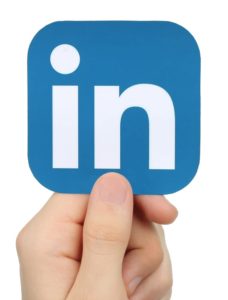LinkedIn for Doctors: 6 Big Reasons Why Doctors Need It

In our rapid-fire messaging we discovered that we were both going on the road again. But the good news is that—purely by chance—our travel plans actually overlapped. We are both traveling to the same community on the East Coast at the same time. It turns out that we could meet there—3,000 miles from our homes. Being connected via LinkedIn became an instant business benefit.
LinkedIn is a valuable tool for doctors, administrators and professionals…
Among the major platforms, LinkedIn is a bit different from the others. For one thing, it is less “social” and more “business” than Facebook’s friends-and-family model. LinkedIn is older than the other “big name” social media platforms, and the business differentiation is a useful advantage for doctors, administrators, professionals and providers.
The LinkedIn adoption curve has lagged a bit in the past, but its business and professional value remain strong. More than two million doctors and other practitioners maintain an individual or company profile.
For healthcare marketing purposes, LinkedIn’s added value is that it is primarily for being visible among and connecting with fellow professionals. Here are some of the reasons that—more than ever—doctors need to be use LinkedIn:
REPUTATION MANAGEMENT – To a great extent, a doctor’s professional reputation lives and breathes online. Your online presence is the essence of your reputation. And what you say about yourself via LinkedIn is your digital reputation management tool. It is one platform and message that you directly control, direct and present the elements of your reputation and your personal brand.
ENHANCED ONLINE VISIBILITY – Professional listings are authoritative and may carry added weight in the doctor SEO process, so LinkedIn profiles can appear toward the top of search results page. The important distinction here is that you want to be found online… and not just by new or prospective patients.
YOU ARE YOUR PERSONAL BRAND - Your profile (with related keywords) is a showcase for your training, experience and achievements. This is no time to be overly modest in presenting your expertise and leadership. A well-developed profile can be discovered by colleagues, hospital recruiters, as well as medical industry leaders.
REFERRALS, NETWORKING AND MENTORS – LinkedIn reaches physicians and stands out from the competition. It is a natural doctor-to-doctor communications channel and pathway for referrals and professional networking. By definition, colleagues using LinkedIn are open to connections, networking and possibly, professional referrals.
CAREER ADVANCEMENT – The original purpose of LinkedIn was to support career advancement and the business of moving up the professional development ladder. Being connected—or linked—is the first step in being known for healthcare employers and prospective employees. Staffing and recruiting is a process of seeing and being seen online.
CONTINUING EDUCATION – The open publishing format of LinkedIn is an opportunity to both learn and to teach. Articles can relate to virtually any appropriate business subject and keep readers in touch with timely topic, news or trend. It is also a window to track thought leaders, hospitals and organizations…even competitors.
LinkedIn is a sizable business- and employment-driven networking platform. It’s big—over 100 million users—plus, it’s free. And for virtually every professional and professional practice, it is a marketing- and reputation-smart tool for healthcare and business.
Related Articles:
LinkedIn: Every Doctor’s Heavyweight Social Partner
10 Easy-to-Do Tips to Getting More Value from LinkedIn
LinkedIn: The Business-Serious Social Media for Physicians and Hospital Execs









